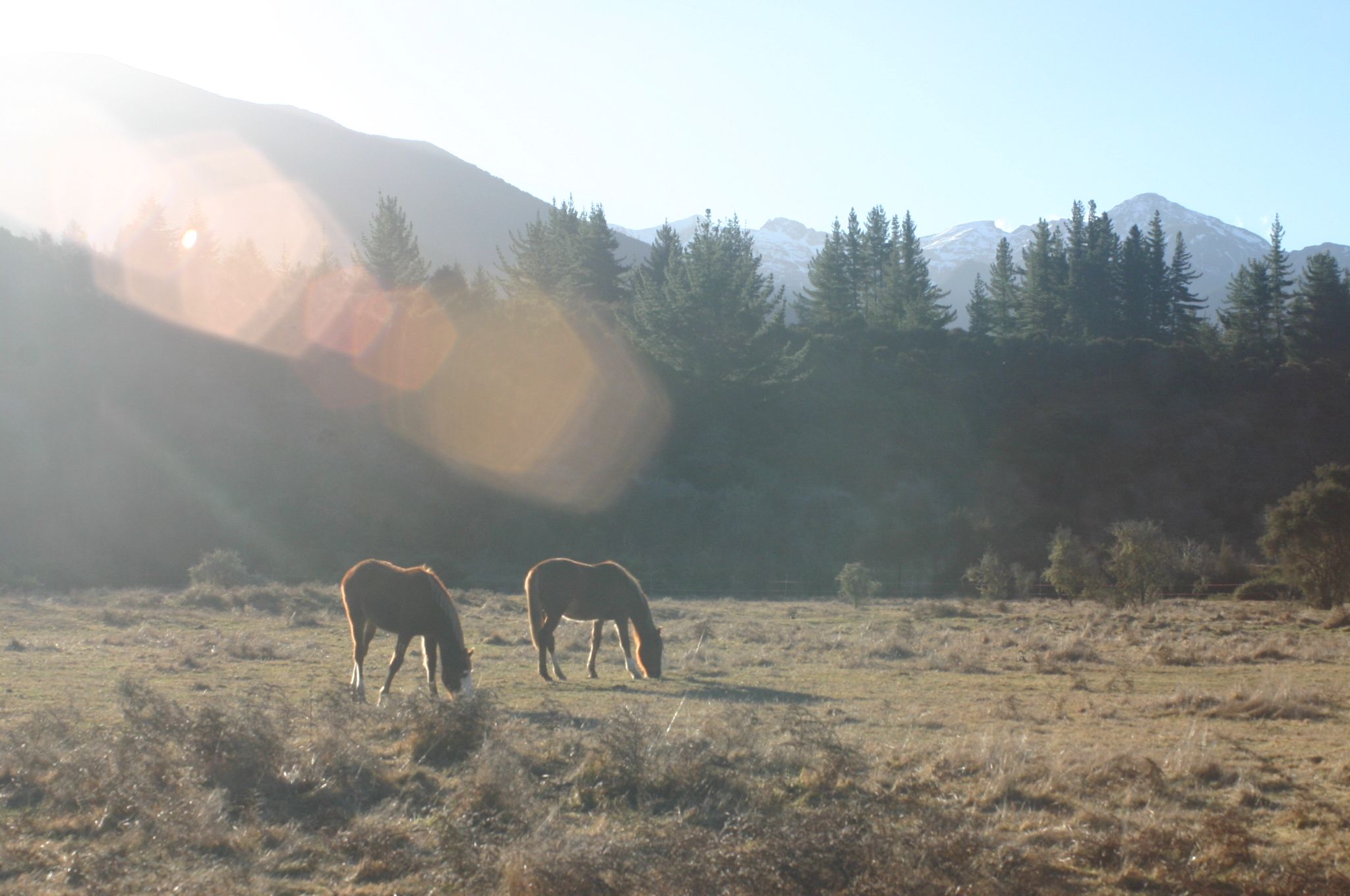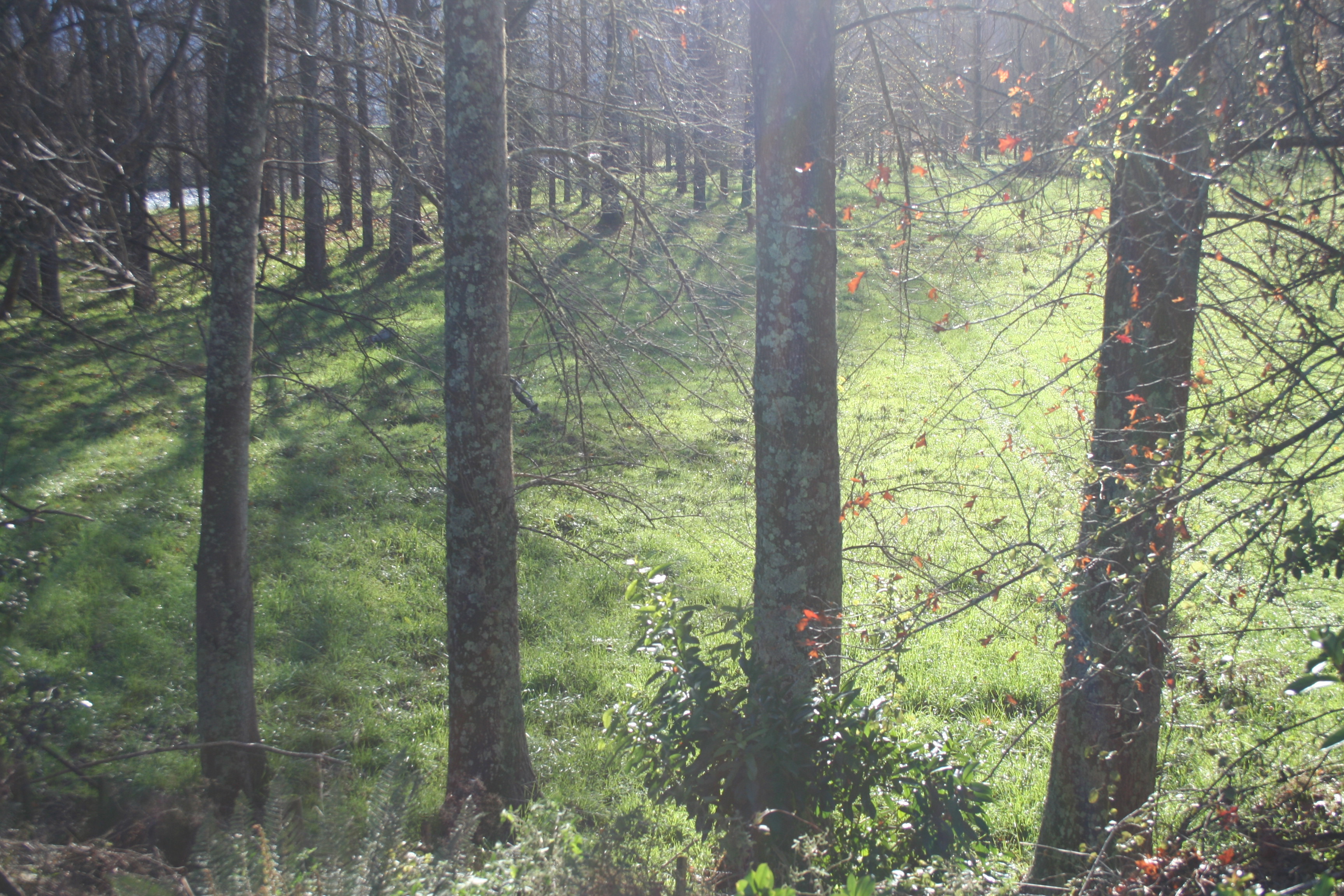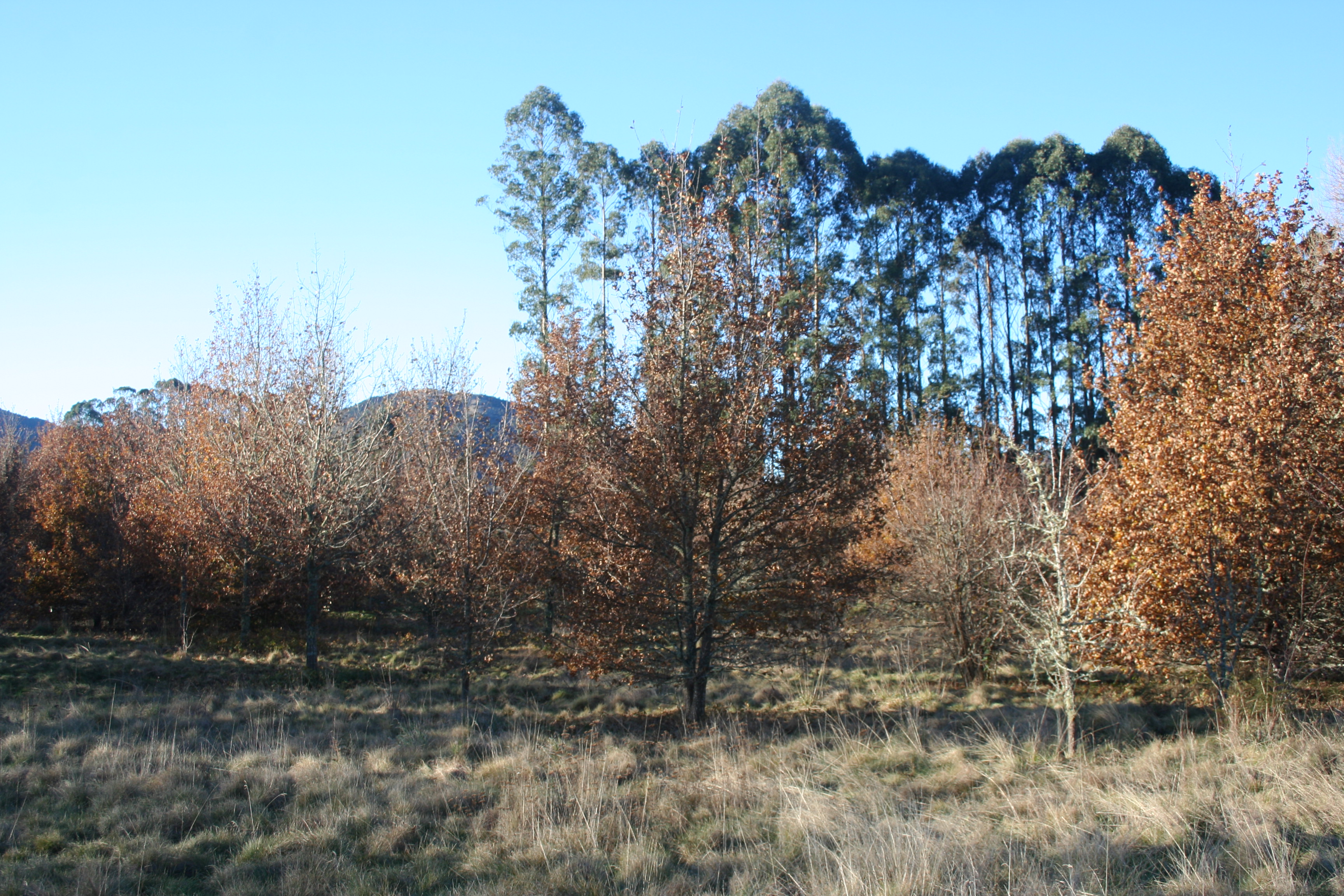Dial-a-Tree Virtual Tree Nursery
Tree Stuff Blog
Agroforestry - What it Isn't
www.dialatree.co.nz

Horses and wildling pines in the hills
This buzzword has returned to the pages of the farming papers as a futuristic direction for forward-thinking farmers to consider. "Hey - we could try agroforestry!" But what does it really mean? When the word agroforestry appeared in the seventies it generally meant taking the hugely un-radical step of planting pine shelterbelts across the prevailing winds, to increase lambing survival and reduce pasture evaporation. This worked so well, compared to the utterly bleak treeless desert presented by NZ's farm landscape prior to then, that this simple image: sheep for wool and meat, and rows of pines for shelter and maybe wood, has become the mental picture that the word "agroforestry" pops into our heads. But that's not agroforestry.
On a continuum from "treeless sheep desert" at one end to "untouched jungle" at the other, the old "sheep-and-pines" is still very much at the desert end, not the forest end (see diagram).

Agroforestry sits between pasture and forest
At the other, forest extreme, from sheep pasture is Permaculture: a labour intensive planned tangle of ground crops, fruit and timber trees, vines, animals, poultry, water trapping, composting and manure capture. This is a sustainable organic farming system built around perennial crops like trees, a "Food Forest" where each species interacts to benefit all the others. The Permaculture (from "Permanent Agriculture") system mimics the jungle with multi-layered, interactive systems; with a focus on human survival and providing home-produced materials, like timber for construction. Fertility is the aim, soil improvement with few external inputs. Deciduous leaves falling and animal manures improve the soil and increase the farm's productivity, as does the huge range and diversity of crops, from, say, hazelnuts and pears, to oak timber, pigs eating the acorns, smoked bacon with salads and passionfruit, that such a woodland provides. There are many small farms like this in Southern Europe, New Zealand, Melanesia and India for example, often managed at a family or small village cooperative level.
This sort of intensive permaculture is another extreme, really going beyond "agroforestry", in the direction of more trees and fewer stock units. Amazingly though, studies in India and elsewhere have shown that these humble backyard woodlands provide the most diversity, and importantly, the best resilience to challenges in raw material or food supply or changes in markets, of all farming types. The abilty to survive on your own produce as well as having a range of tree crops, vegetables and medicines to fall back on if the main crop fails or the price crashes, all these protect the small farm and its ability to survive through troubled times. In modern jargon, a diverse smallholding can more easily "pivot" to different products.

20 year old Kawa poplars improving pasture near Murchison
Agroforestry - What It Is:
Agroforestry focuses on Forestry, high grade timber growing, as a major byproduct to animals. Shelterbelts are still a good way of using the land but they are mixed species, not one row: but ten trees wide, with nut trees, timber trees, acorns, leaf fall and fruit, and they are seasonally accessed by the stock for sheltered lambing or extra fodder. Whole areas can be set aside for timber production such as cedar, larch, or cypresses on steep hillsides or less productive pasture. Meanwhile the good pasture is enhanced by new soil, moisture retention from shade, mixed pasture herbage and the reduction of cold winds by shelter trees. Firewood tree blocks can be grown and grazed in rotations, the animal manure boosting the growth of eucalypts or alders. Hardwoods can be grown like oak, cherry and beech for farm uses such as fences, gates and buildings, and ultimately, for forestry timber production at the local sawmill. Fodder trees like poplar and tree lucerne can be cropped in hard weather. A fruit orchard is part of the mix. All the noble aims of permaculture and sustainable regenerative farming should be seen as the lofty goals. But with the ability to fit into large, real world macro-economic systems: i.e. export markets and large scale production, more like we are used to in New Zealand's large scale farms. The main difference from say, dairy farming is that trees, (not sad, soggy pines, but real, useful timbers!) are an integral part of the agroforestry farm system. With Agroforestry, trees are all mixed up in the raising of meat or eggs as shelter, fodder, shade, firewood, timber, housing, soil improvement etc. as they are in the Permaculture setup - but on a machinery-operated, industrial scale that Kiwis love. All this improves the standard crop of rye grass, reducing erosion, nitrate runoff, weed problems, pugging and soil depletion, as well as improving animal health and variety of diet. With the reduction of wind chill from shelter trees, grass growth rates, and meat weight gains can increase up to 10 percent.

Eucalyptus and oaks sheltering grazing
So here we have a 20 year old 2 hectare stand of mainly oaks (Quercus robur) on a cold, inland mountain farm near Nelson. The acorns feed pigs and the oak trees grow timber. They are pruned to 2 or 4 metres. Nashi pears and heritage Apple trees produce some fruit in amongst the oaks, and trees with truffles have been planted. There are also long term tree crops of Larch, Red oak (Quercus rubra), and Douglas Fir, on a 45 year forestry lease, in all around 7 ha of forestry, fenced off in two main stands. The main grazing is drystock cattle and sheep with the cattleyards shaded by the trees for hot summer shade. The stock get the best paddocks and the trees quietly grow in the less grazeable areas. The row of giant Super Selected Eucalyptus nitens is only 25 years old and they provided tall wind shelter and now: bulk firewood for woodburners and hot water. The farm also has plantings of hazelnuts, walnuts, and peaches all producing crops for home preserving. Future milling will make a good return on the high value specialty timber trees. In the meantime the conventional pastoral farming, with ryegrass and winter fodder beet, goes on in between the forestry blocks, with all the benefits of trees dotted through the farm. Hives of bees feed from the wild manuka scrub on the hillside. There is an abundance of wild game to supplement the rural diet: hares, pigs, quail and deer. A huge native bird and grassland songbird population. And 20 years ago these were bare paddocks in a dry, cold valley. An example of a modern Agroforestry combination suited to the dry, cold eastern side, or interior of either island.
Back to dialatree www.dialatree.co.nz



